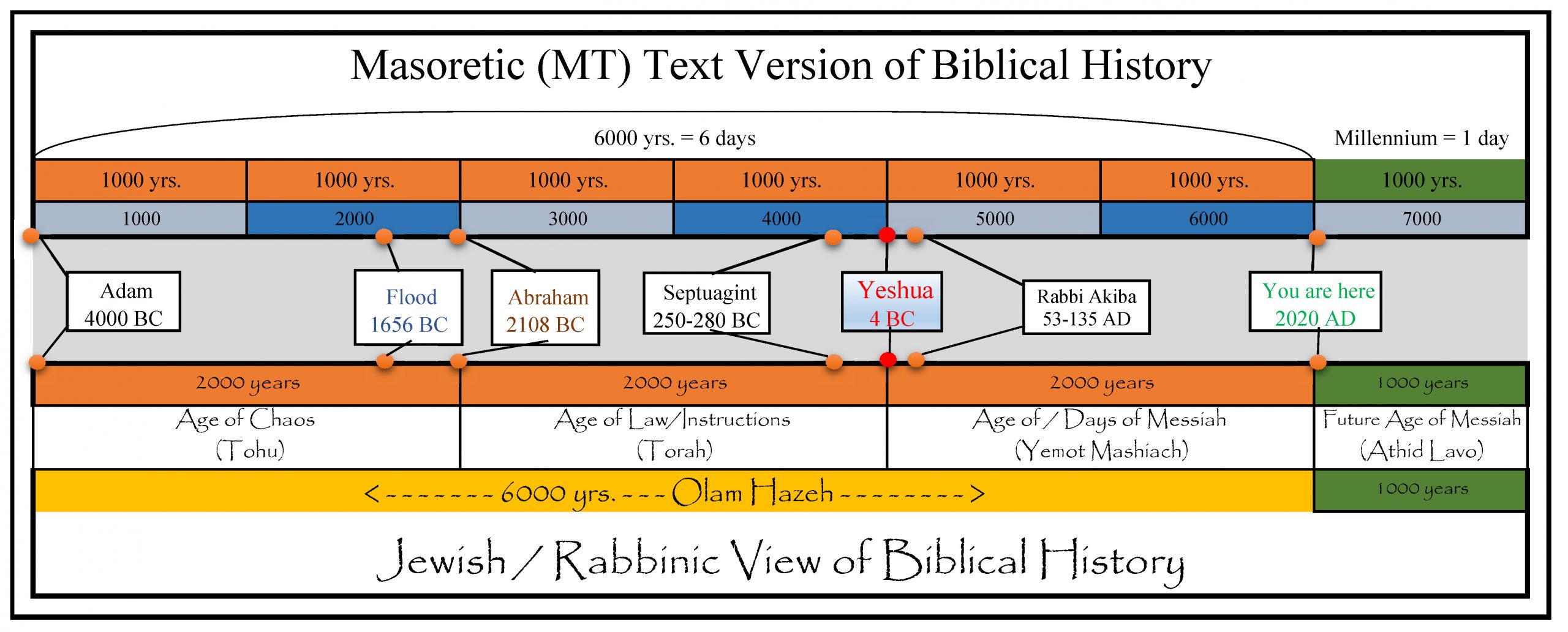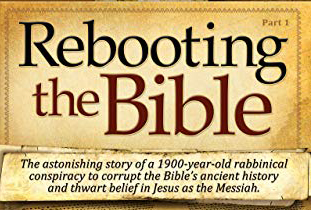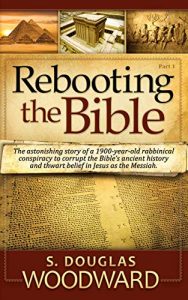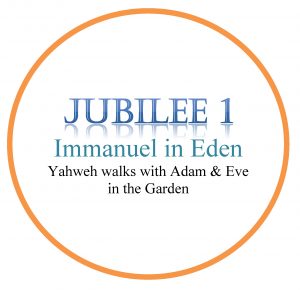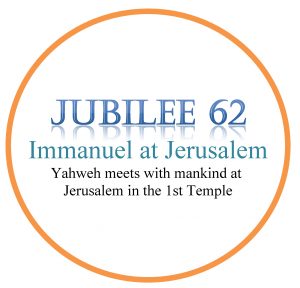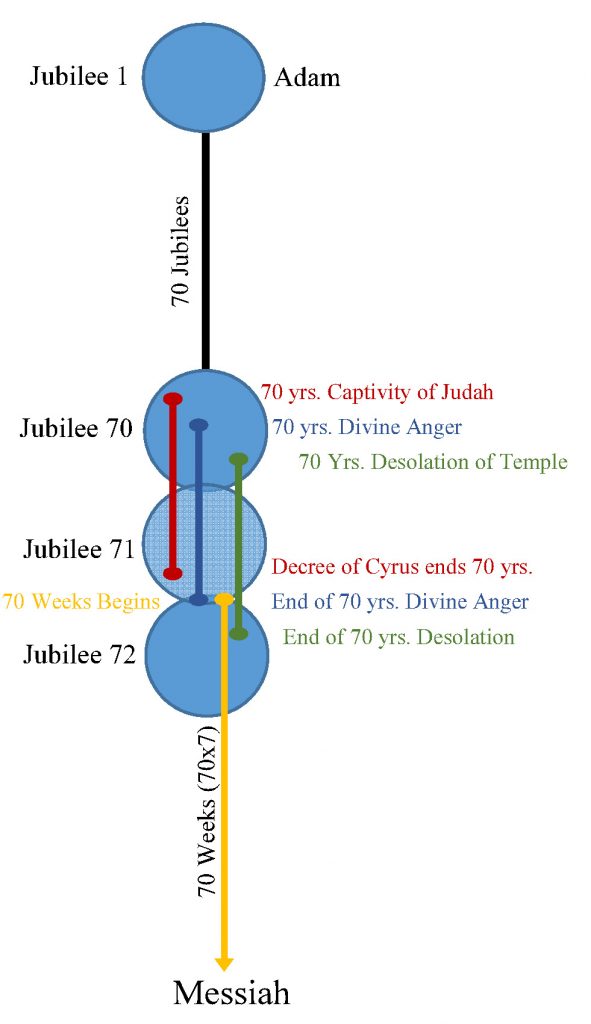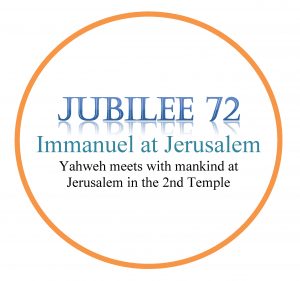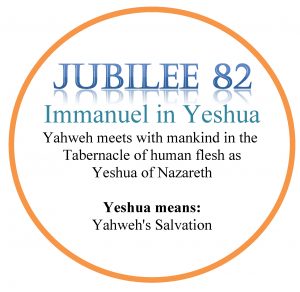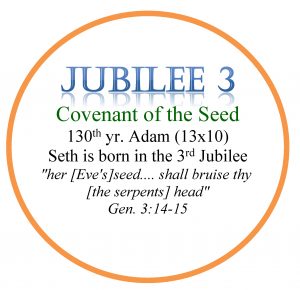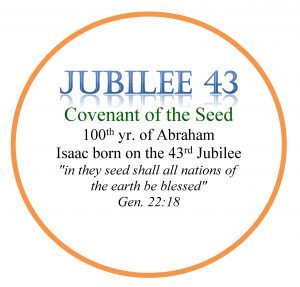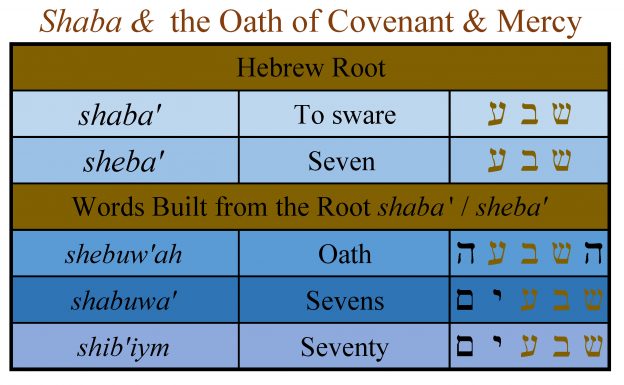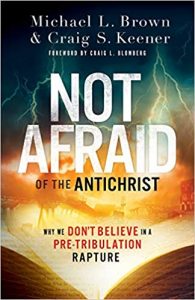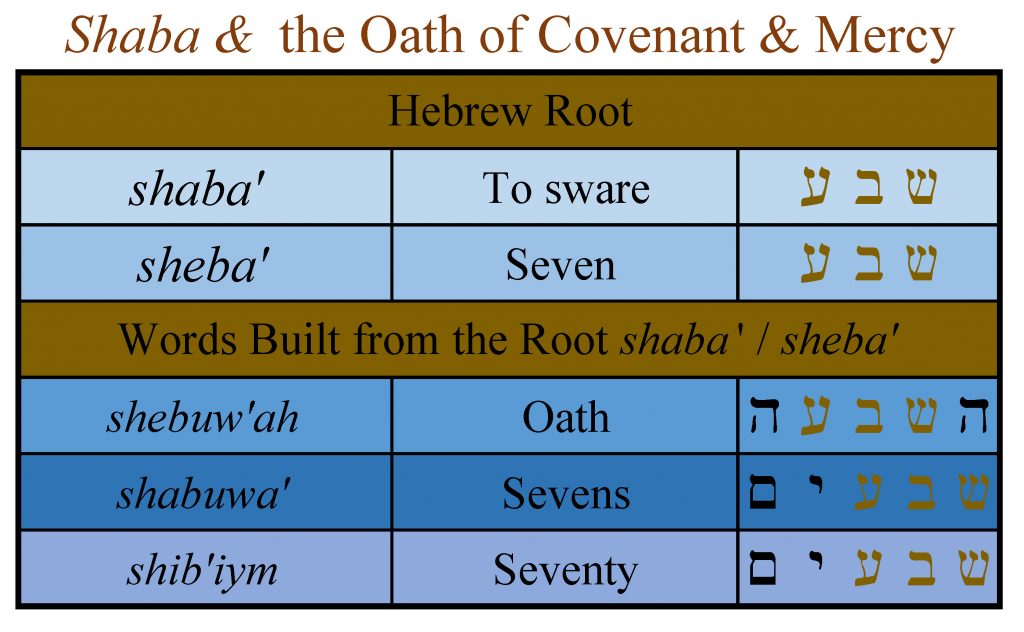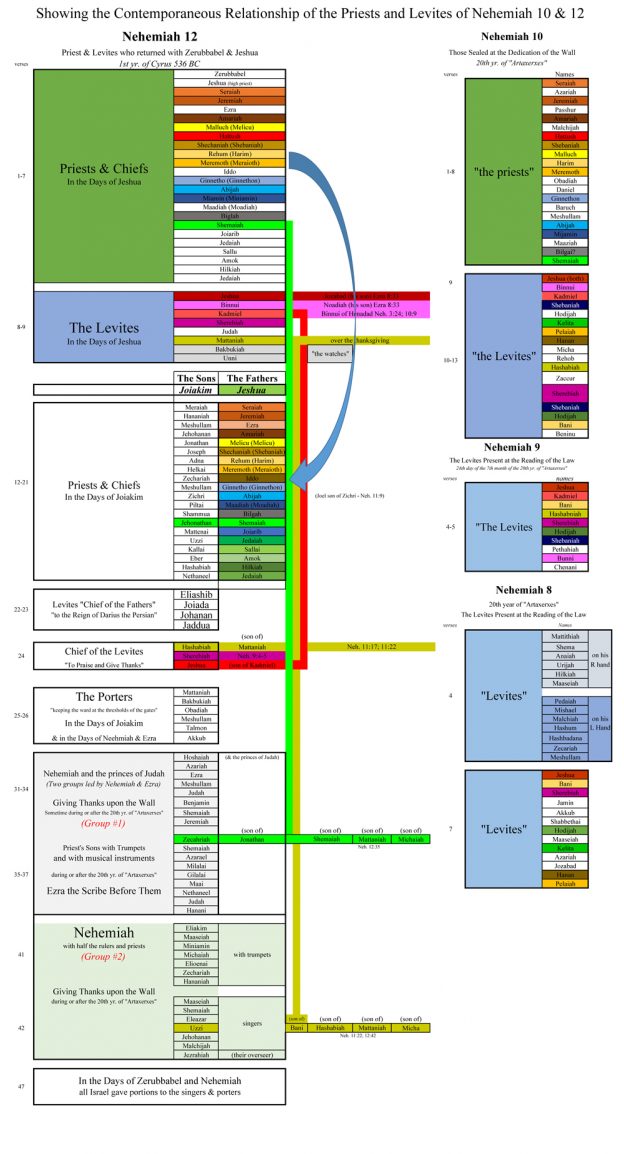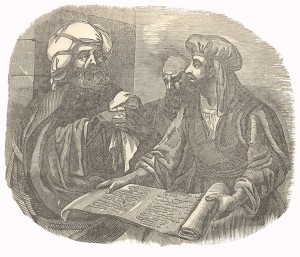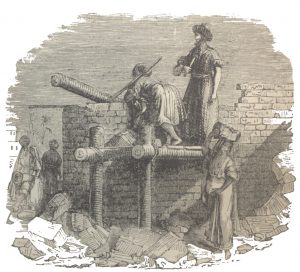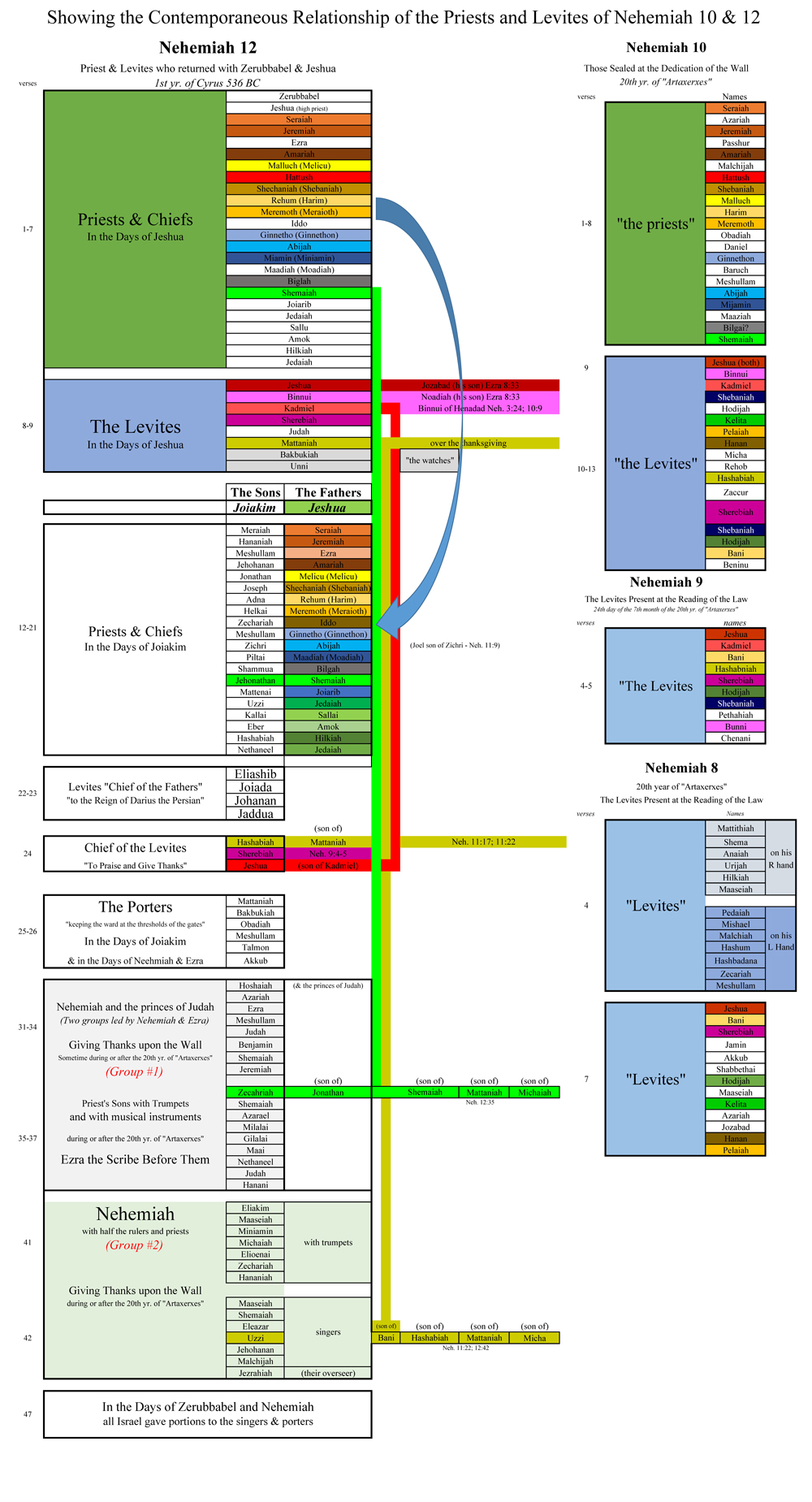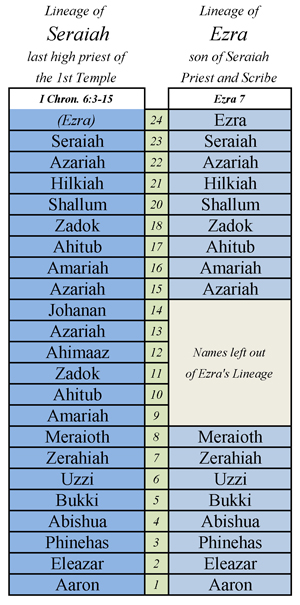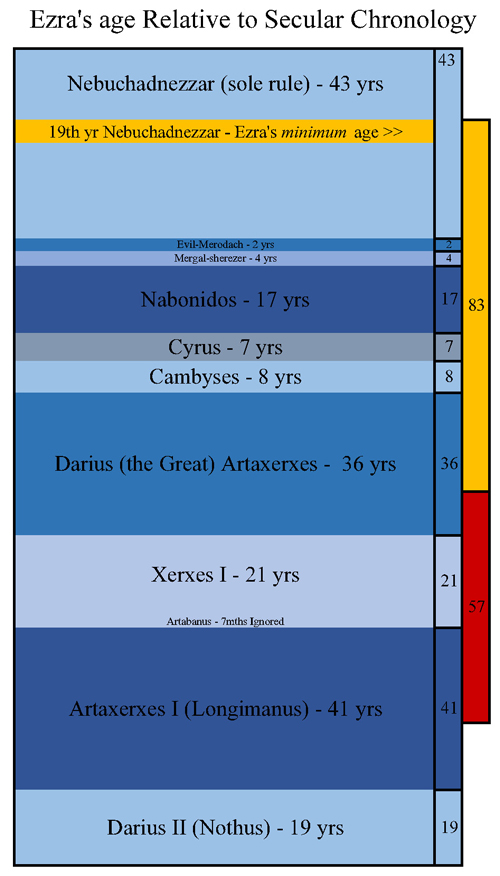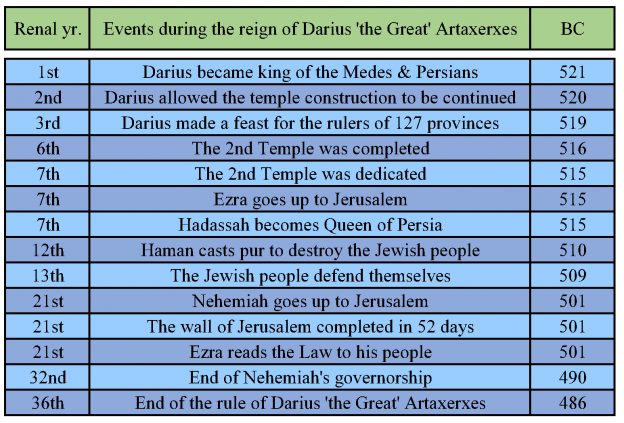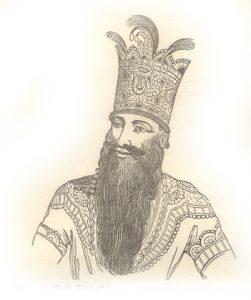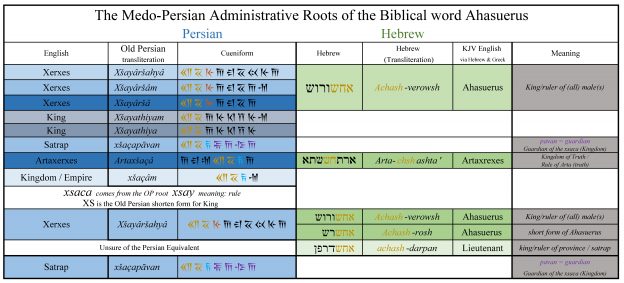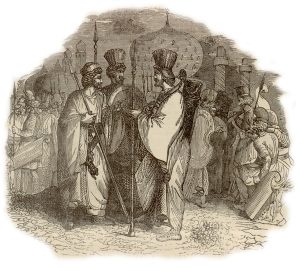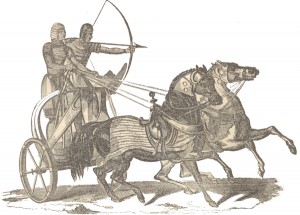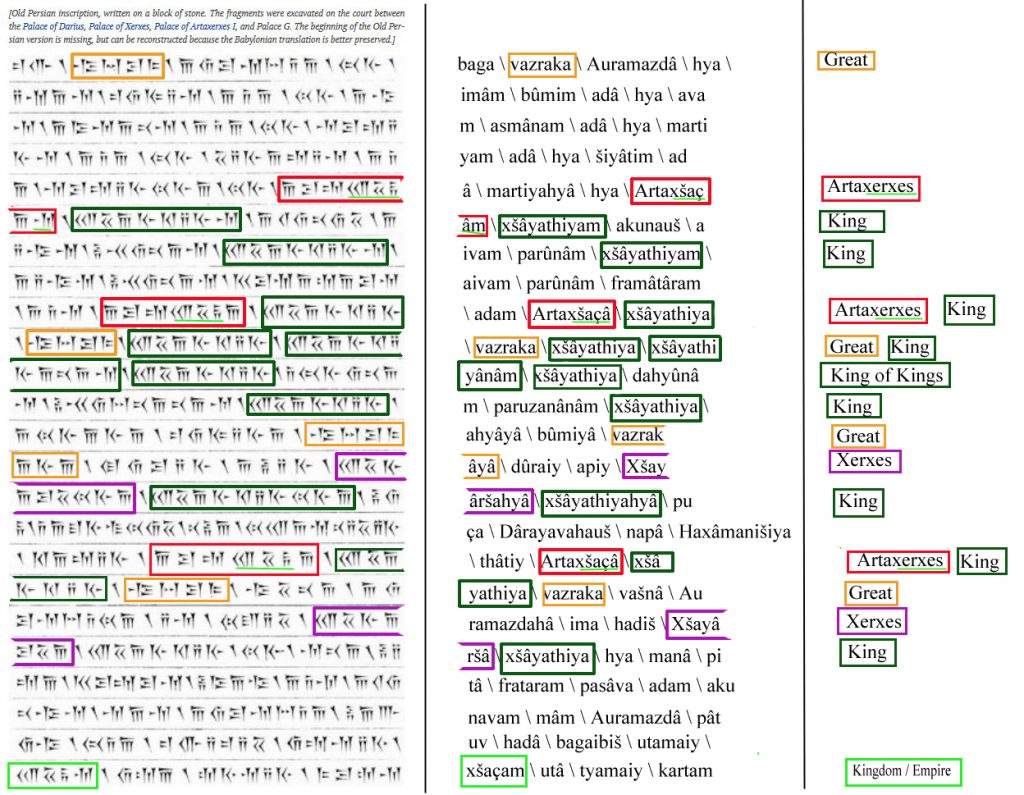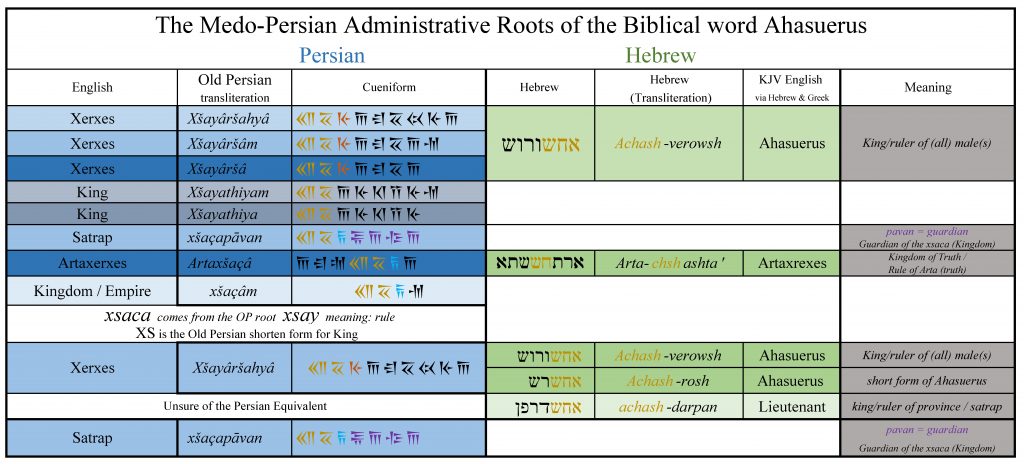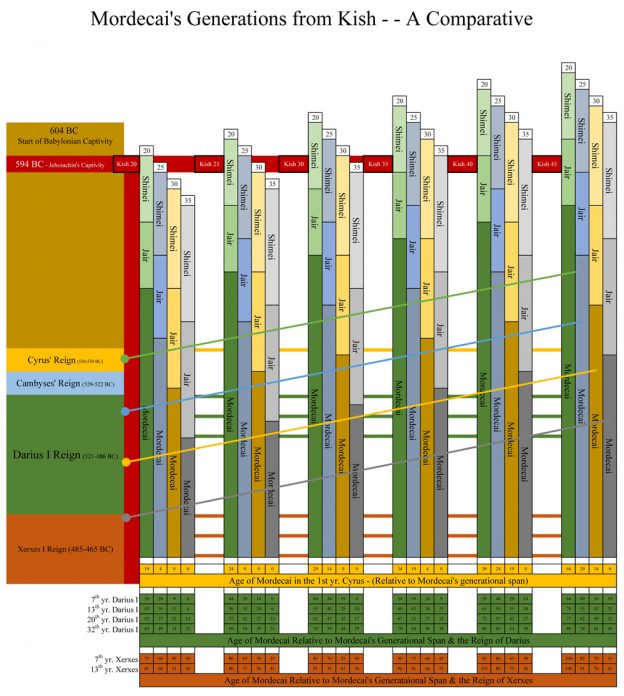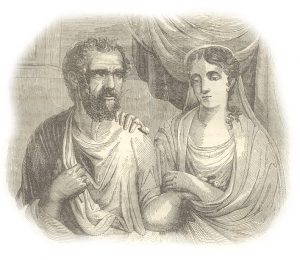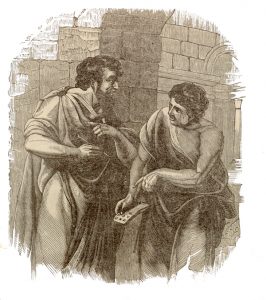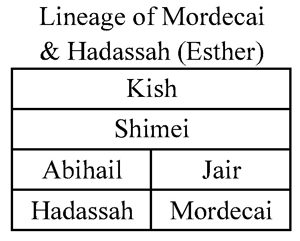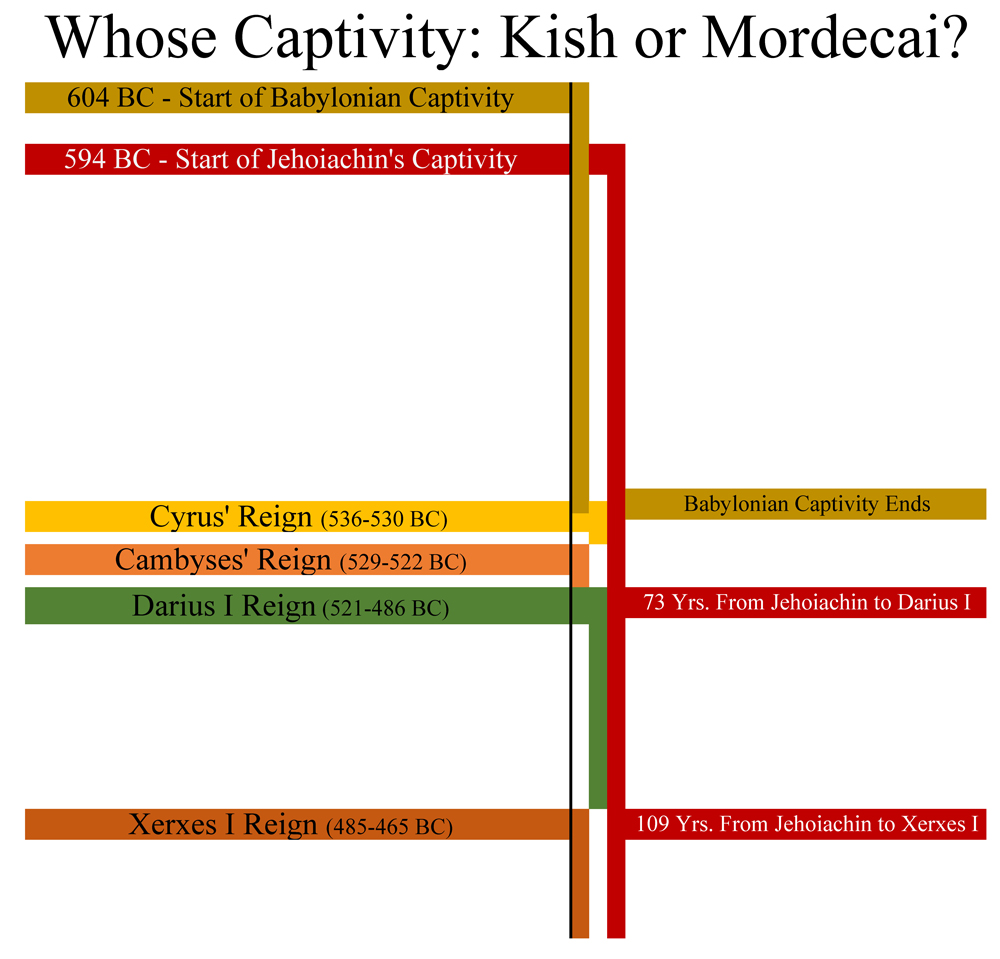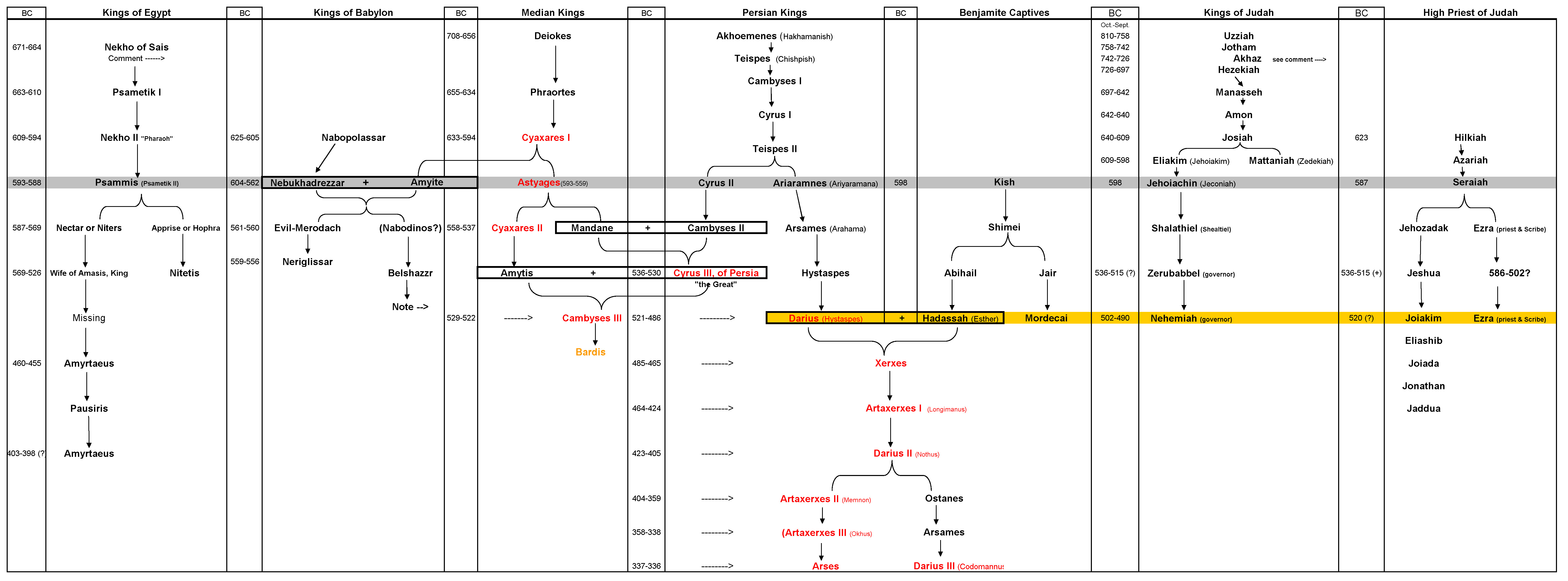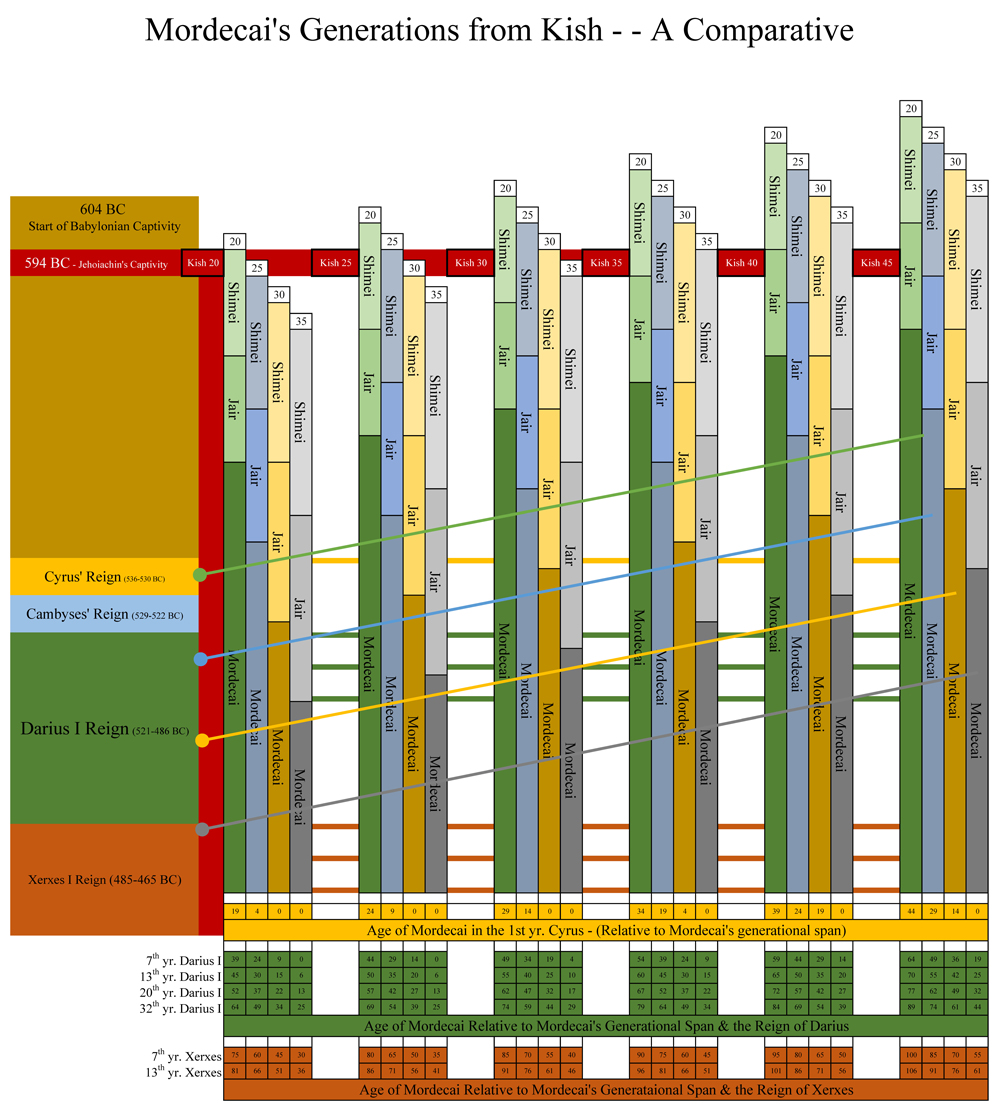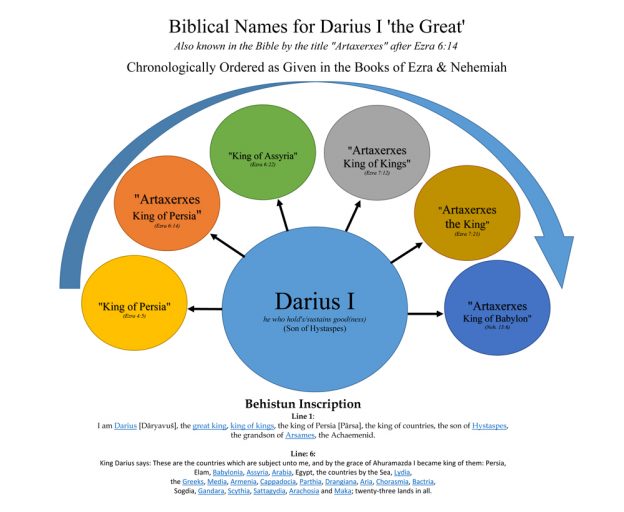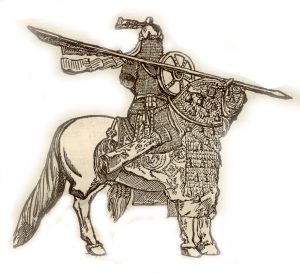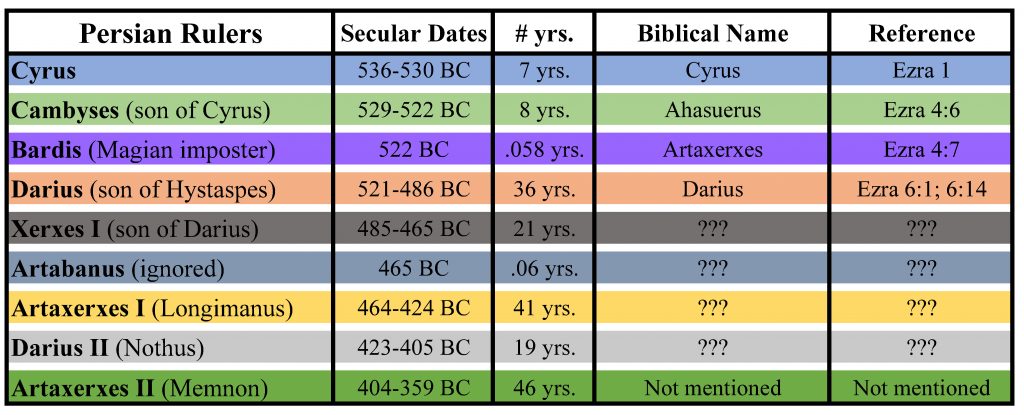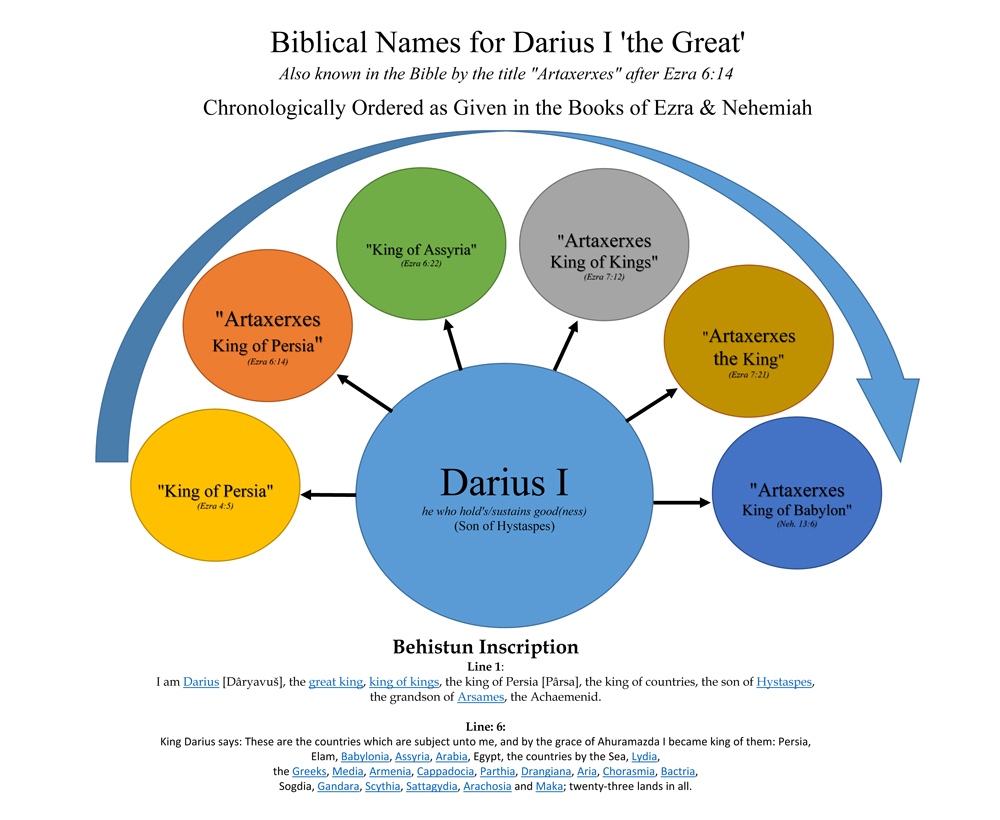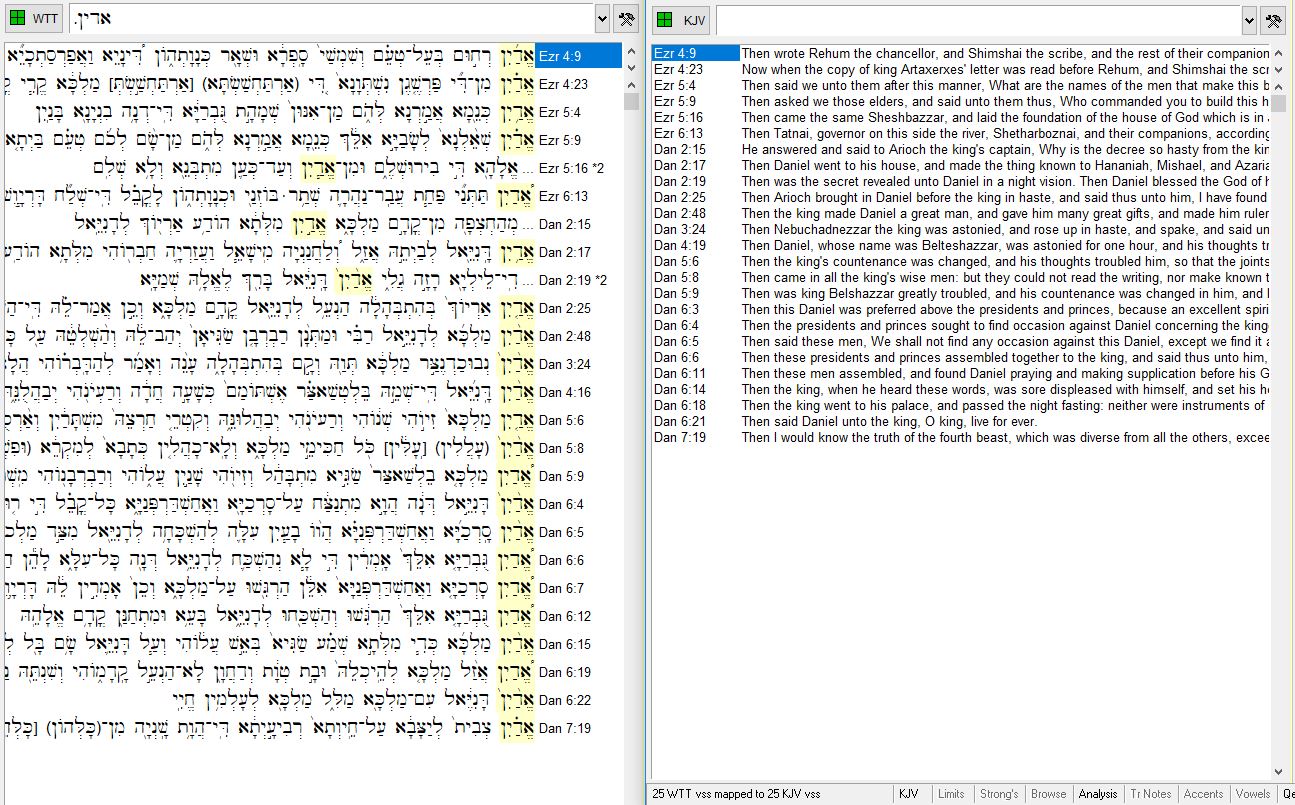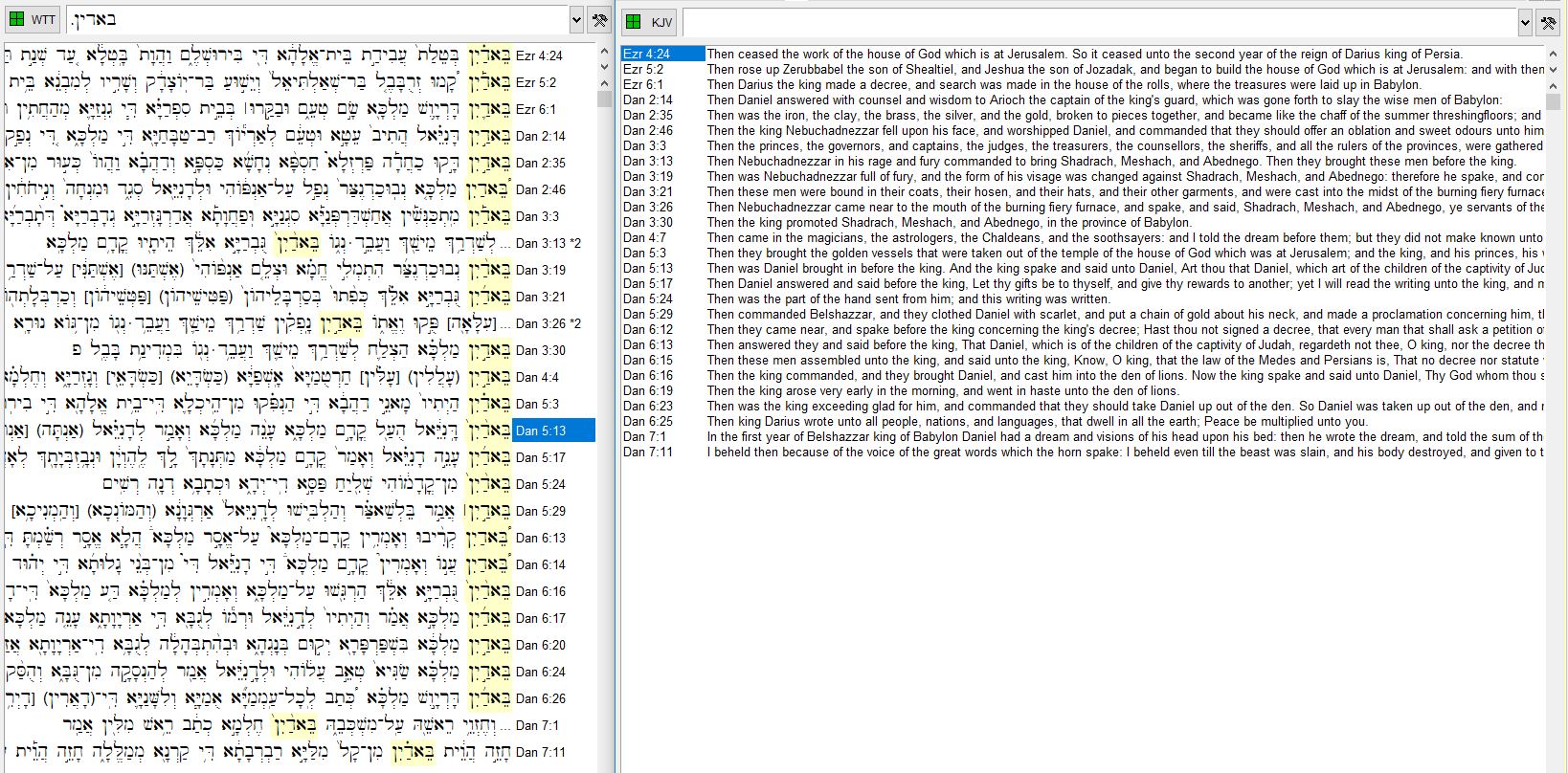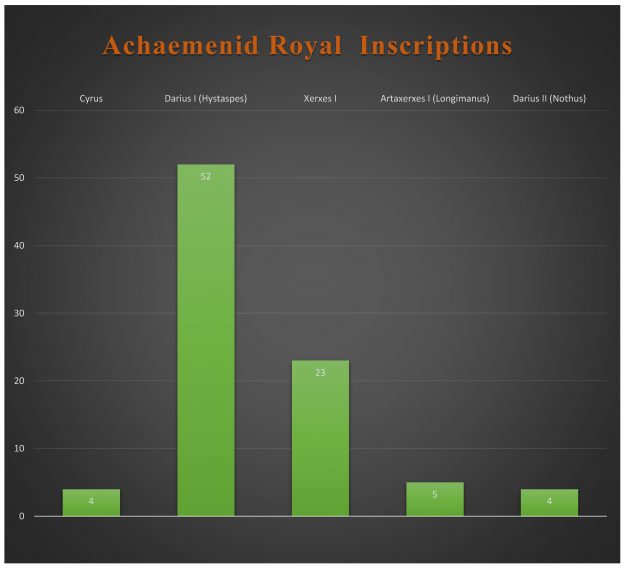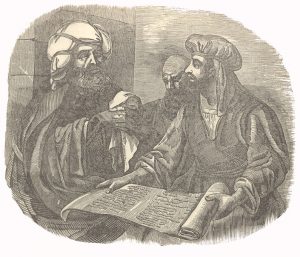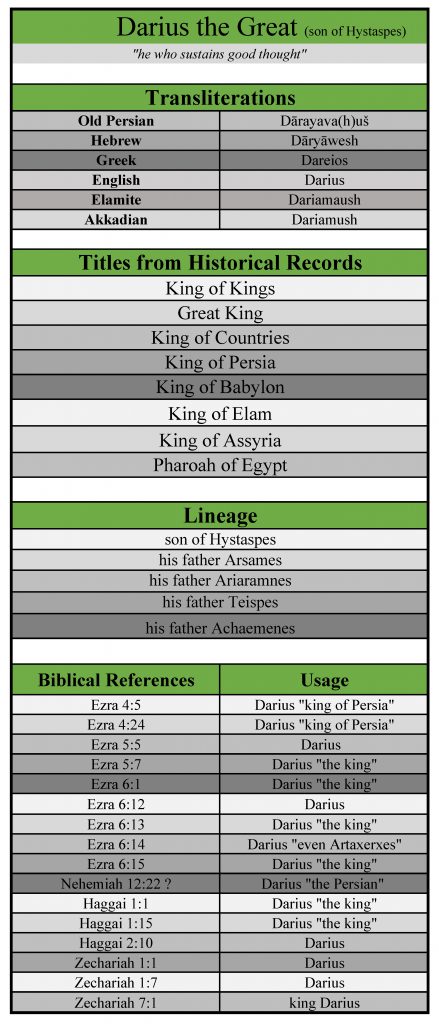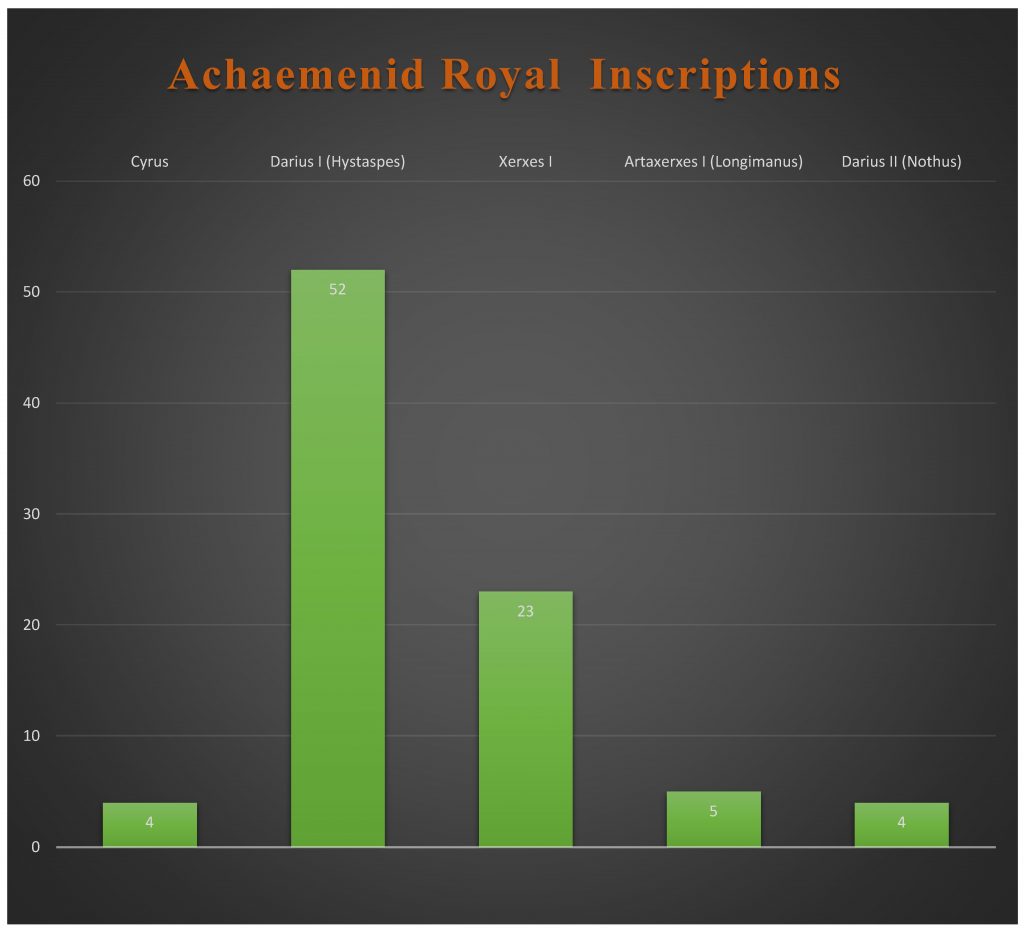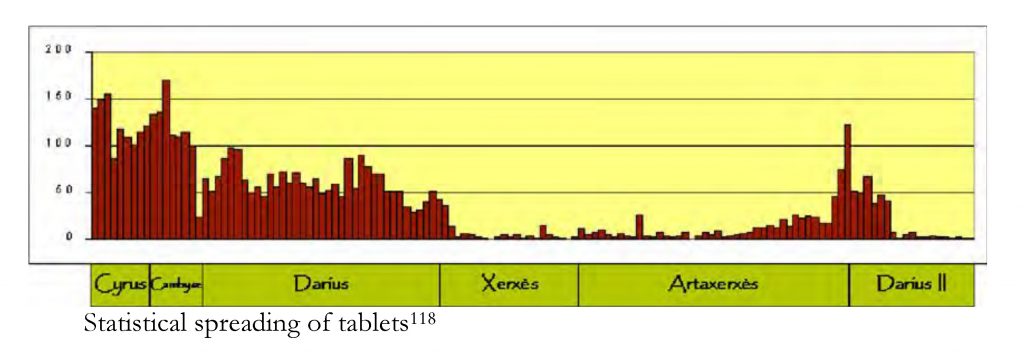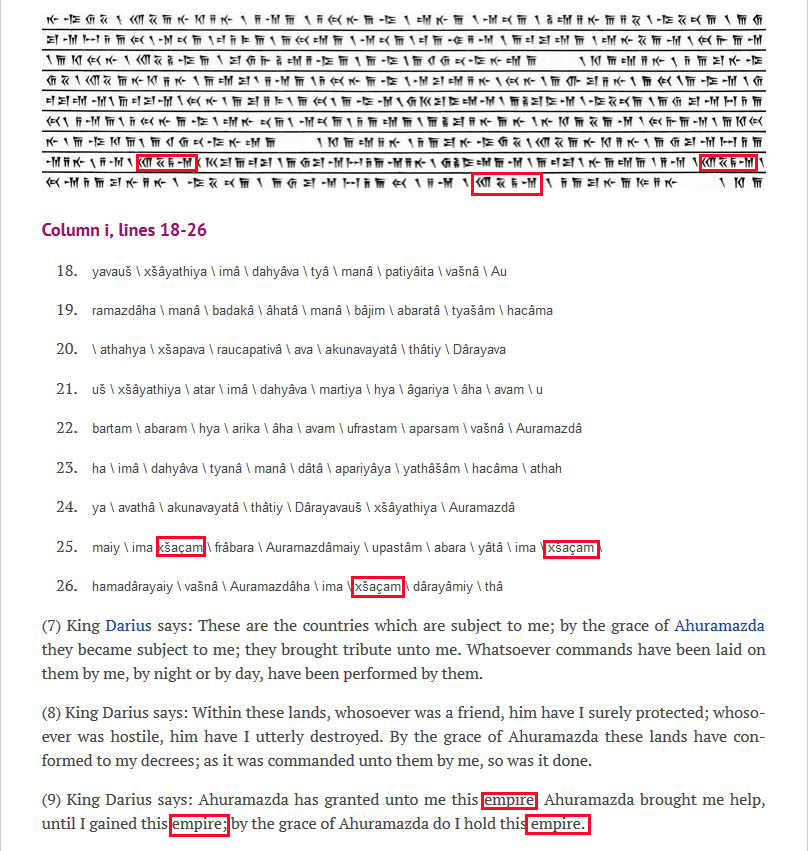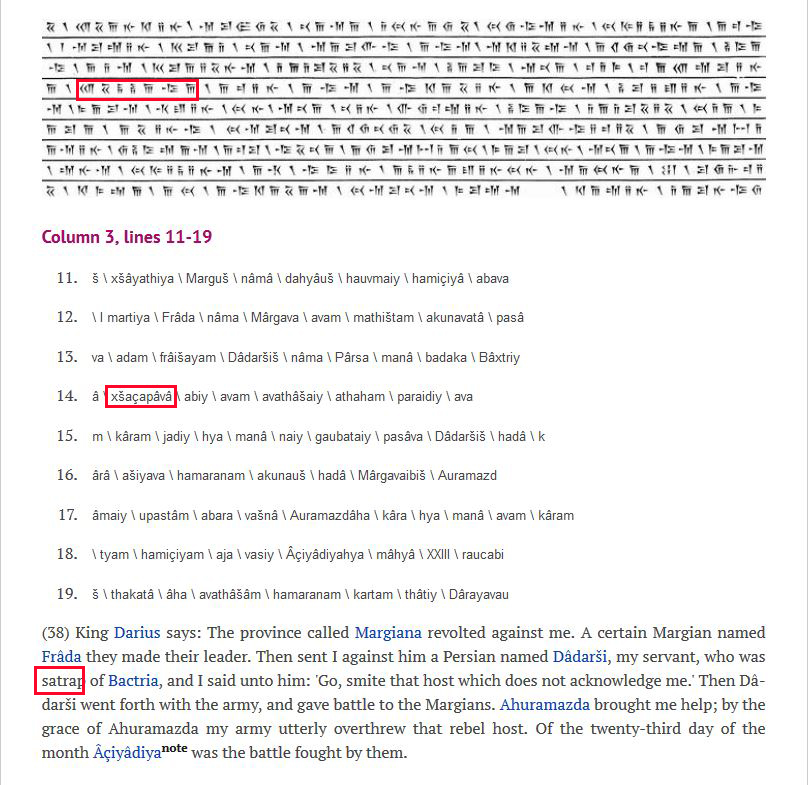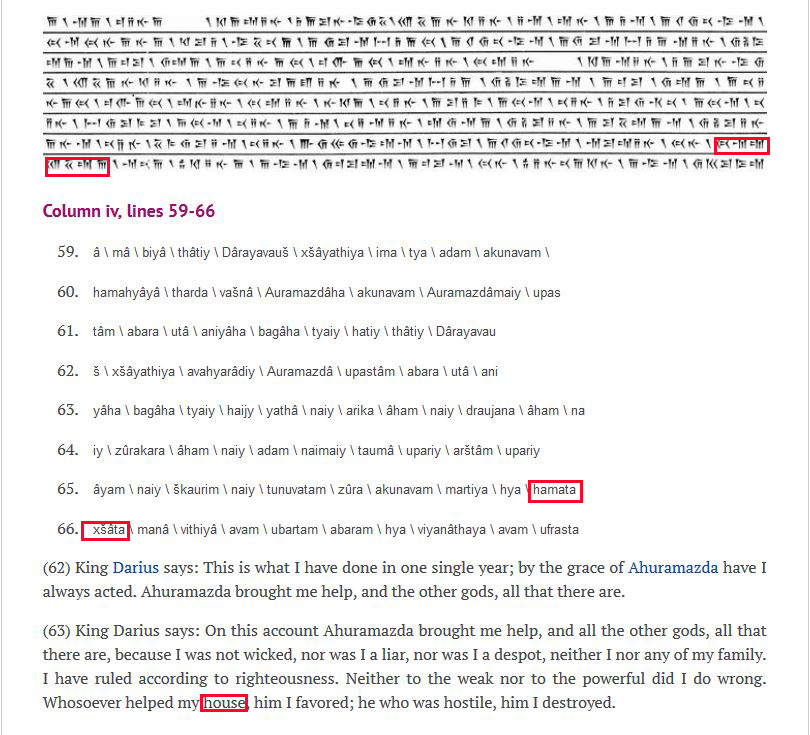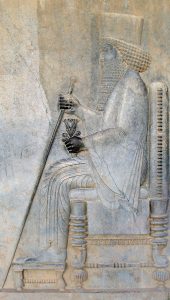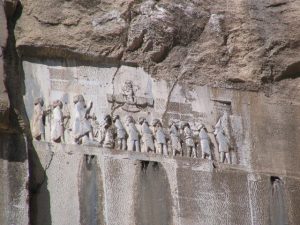Did the Jewish Rabbis Alter the Bible to Hurt Christianity?
In my last article, we learned there was no smoking gun of Rabbinic manipulation of the Hebrew Old Testament texts. The best “evidence” that those who hold this Christian conspiracy theory could come up with were second hand accounts and the belief that the Jewish rabbis of the 2nd century had “motive, means, and opportunity” to change the Hebrew Masoretic (MT) text of the Old Testament in order to undermine the Christian belief that the Yeshua of Nazareth was the Old Testament’s promised Messiah.
We also learned in the last article that the Septuagint text of the Old Testament was in fact purposely changed in thousands of places. This manipulation was likely a well-meaning attempt to make it more appealing to the Greek speaking audience of its day. Kind of like a “living translation” scholars compile today in order to make the Bible more understandable to their modern readers. I don’t agree with this mentality, nevertheless, I understand the reasons one might attempt such an effort.
Since there is no hard evidence the Jewish rabbis of the 2nd century manipulated the text of the Old Testament to undermine early Christian beliefs that Yeshua (Jesus) was the Old Testament’s promised Messiah, shouldn’t we as Christian’s give them the benefit of the doubt? I believe we should
In the interest of thoroughness though, let’s look at some of the Christian conspiratorialist’s circumstantial evidence to see if there is any validity to their claims.
Let’s start with the claim that the Old Testament chronology was shortened so that Yeshua of Nazareth did not arrive at the time expected of the Messiah. Here are a couple of quotes from Mr. Woodward’s – Rebooting the Bible pp. 199-200 that explain his arguments:
Voices Confirming MT Corruption of the Timeline
Debating the nature of the differences between the LXX and the MT isn’t just a recent pastime of interested academics. It has been a hot topic for seventeen centuries! And scholars in the early Church arrived at the same conclusion that our study deduces: The rabbis of the first and second centuries changed the MT text in Messianic passages, but also “deflated” the Genesis 5 and 11 chronologies; Henry B. Smith Jr. informs us:
Ephraem of Syria [306-373 A. D.] is the first known ancient source to explicitly argue that the Jewish rabbis of the second century AD deflated the primeval chronology by ca. 1300 years in their Hebrew MSS for the purpose of discrediting Jesus as the Christ: “The Jews have subtracted 600 years [in Genesis 5] from the generations of Adam, Seth, etc., in order that their own books might not convict them concerning the coming of CHRIST: he having been predicted to appear for the deliverance of mankind after 5500 years.” Ephraem was one of many ancient authors who claimed that the rabbis deliberately reduced the primeval chronology for messianic reasons.224
Prophecy students are familiar with the notion that there would be a “Sabbath week” of millennia, meaning that biblical history would extend 7,000 years with the final 1,000 years being the reign of Christ –aka the Kingdom of David, or more appropriately, the Kingdom of God. Few know that this belief was widespread in Second Temple Judaism – meaning that the Messiah would appear before six thousand years had transpired. Says Smith, “Messianic chronologies were usually associated with the Days of Creation, with each day representing 1,000 years of history. In some schemes, the Messiah would arrive in the 6th millennium (5000-5999 AM), and usher in the kingdom in the 7th millennium (6000 AM).”225 Smith comments that this was done by the rabbis because “reducing the primeval chronology as presently found in the MT places Jesus’ life outside the time of the coming of the Messiah [This is, Jesus’s coming in 1 B.C., would have been too early for Jesus to qualify as Messiah].226 But Akiba had altered the dates so that Jesus of Nazareth didn’t come as the Messiah after 5,000 years!
Rebooting Early Christian Anti-Semitism
There are several problems with Mr. Woodward’s and Mr. Smith’s reasoning above. To start with let’s address the origins of the Christian Conspiracy Theory regarding the unproven chronological manipulations of the Hebrew Bible by Jewish Rabbis.
In the quote above it is admitted that the first known ancient source who “explicitly“ argued that Jewish rabbis purposely manipulated the Hebrew text of the Bible was the early church father Ephraem of Syria. (306-373 AD) What Mr. Woodward and Mr. Smith fail to mention is that Ephraem was a rabid anti-Semite who wrote vitriolic rants against the Jewish people in an attempt to convince his Christian followers that the customs of the Jewish people were evil.
You see, the context of Ephraem’s words take place in the fourth century when it was still popular for many Christian believers to keep the Biblical holy day of Passover. Ephraem and other church fathers believed these “Jewish” traditions were evil and the Eucharist was the proper method to remember Yeshua sacrificial atonement on our behalf. Even though the Passover supper was in fact the symbol by which Yeshua taught his own disciples and those disciples taught their early followers to remember Yahweh’s redemptive plan for mankind and Yeshua’s part in that plan, many of the church fathers reject the Passover symbolism because of it’s “Jewishness”.
So you clearly understand the mentality of Ephraem and his unsupported claims that the Jewish rabbis manipulated the Old Testament chronology of the Bible; here are a few quotes reflecting his view of the Jewish people. These quotes come from several of Ephraem’s anti-semitic hymns which can be found here: Ephraem the Syrian
“Blessed is he who rejected the People [the Jewish people] and their matza
Since their hands were defiled with precious blood!
For when the People went forth they bore
leaven of idolatry along with matza.
See how the People refresh their outward appearance
While in their heart dwells deadly poison.
For [the People] resembles the first serpent
Who deceived us by giving us deadly fruit.
Don’t take that matza, brethren,
from the People with blood-spattered hands
How much more unclean is matza,
kneaded by hands that killed the Son!
The People that did not eat pork
is a blood-stained pig.
‘I hate the Jewish dead!
I loathe their bones in Sheol.
‘If only there was a way I could get rid of their bones
from Sheol, for they make the place stink!
‘By the Holy Spirit, I’m astonished at how long I’ve dwelt
among a People who smell as rank as their way of life!
‘Onions and garlic are the heralds of their deeds — (Numeri 11.5)
The mind of that filthy People resembles their food.’
Ephraem’s claims of Jewish manipulation of the text must be seen through his depraved and unscriptural view of the Jewish people as reflected above. Ephraem clearly hated the Jewish people. His anti-semitic conspiracy theory about their manipulations of the Scriptures was likely rooted in this same evil.
Alison Salvesen of Jewish/Non-Jewish Relations explains the context of Ephraem’s Anti-Jewish Hymns this way:
Discussion of the sources
The first three examples of Ephraem’s anti-Jewish works are taken from a series of hymns on the Unleavened Bread, for use in the days before the festival of Easter. It is clear from Ephrem, and from other writers of the period such as St John Chrysostom in Antioch in Syria, that Christians found participation in Jewish festivals attractive, with Pesach being a great favourite. Ephrem uses the strongest possible language to deter his congregants from eating matza with their Jewish neighbours. He also uses Old Testament Scripture very selectively and out of context, to support his argument that God has rejected the Jewish Chosen People, in favour of the ‘People from the Peoples’ (i.e., Gentile Christians). Ephrem’s goal is to get local Christians to accept the superior spiritual significance of Easter over Passover, and of Eucharistic bread (as symbol of the Body of Christ) over Jewish unleavened bread. https://jnjr.div.ed.ac.uk/primary-sources/rabbinic/st-ephrem-ephrem-the-syrian-c-306-373-ce-anti-jewish-hymns/
While not all early church fathers shared the vitriolic hatred expressed by Ephraem of Syria, many did consider the Jewish people (as a race) to be hopelessly flawed, and because of this supposed deficiency God cursed them with Torah observance and suffering. Justin Martyr, one of the earliest proponents of the Christian Conspiracy theory concerning the Rabbinic manipulations of the Hebrew text, had this to say about the Jewish people in his work: Dialogue with Trypho (a Jew). (Circa 155-170 AD)
We too, would observe your circumcision of the flesh, your Sabbath days, and in a word, all you festivals, if we were not aware of the reason why they were imposed upon you, namely, because of your sins and the hardness of heart.
The custom of circumcising the flesh, handed down from Abraham, was given to you as a distinguishing mark, to set you off from other nations and from us Christians. The purpose of this was that you and only you might suffer the afflictions that are now justly yours; that only your land be desolated, and you cities ruined by fire, that the fruits of you land be eaten by strangers before your very eyes; that not one of you be permitted to enter your city of Jerusalem. Your circumcision of the flesh is the only mark by which you can certainly be distinguished from other men…as I stated before it was by reason of your sins and the sins of your fathers that, among other precepts, God imposed upon you the observence of the sabbath as a mark.
What is so disconcerting about the sentiments expressed above is, first of all, their lack of love as exemplified by Yeshua’s death and resurrection for the sins of ALL mankind, not just the Jewish people. We are all flawed sinners in the eyes of Yahweh. Second, the Jewish people were and are special in the eyes of Yahweh because he chose them to fulfill his covenant with Abraham, that promise that through Abraham’s seed ALL nations of the earth would be blessed. Thirdly, the apostle Paul explained that it was Yahweh’s graciousness that used the rejection of Yeshua by some of the Jewish people and their leaders, to bring the good news of the gospel to the Gentiles – in order that BOTH Jews and Gentiles might be added to the family of God.
Romans 11:7-21 7 What then? Israel hath not obtained that which he seeketh for; but the election hath obtained it, and the rest were blinded 8 (According as it is written, God hath given them the spirit of slumber, eyes that they should not see, and ears that they should not hear;) unto this day. 9
And David saith, Let their table be made a snare, and a trap, and a stumblingblock, and a recompence unto them: 10 Let their eyes be darkened, that they may not see, and bow down their back alway.
11 I say then, Have they stumbled that they should fall? God forbid: but rather through their fall salvation is come unto the Gentiles, for to provoke them to jealousy.
12 Now if the fall of them be the riches of the world, and the diminishing of them the riches of the Gentiles; how much more their fulness? 13 For I speak to you Gentiles, inasmuch as I am the apostle of the Gentiles, I magnify mine office: 14 If by any means I may provoke to emulation them which are my flesh, and might save some of them. 15 For if the casting away of them be the reconciling of the world, what shall the receiving of them be, but life from the dead?
16 For if the firstfruit be holy, the lump is also holy: and if the root be holy, so are the branches. 17 And if some of the branches be broken off, and thou, being a wild olive tree, wert graffed in among them, and with them partakest of the root and fatness of the olive tree; 18 Boast not against the branches. But if thou boast, thou bearest not the root, but the root thee. 19 Thou wilt say then, The branches were broken off, that I might be graffed in. 20 Well; because of unbelief they were broken off, and thou standest by faith. Be not highminded, but fear:
21 For if God spared not the natural branches, take heed lest he also spare not thee.
Grafted into the Olive Tree
As Gentiles grafted into the same source as the Jewish people, we should not get caught up in the reckless accusations of some of the early church fathers who saw the Jewish people as a hopelessly cursed race. Quite the contrary, the Jewish people as a race are indeed special in the eyes of Yahweh and they are and will continue to be a central fixture in Yahweh’s redemptive plan for mankind.
In fact, those of you who like me earnestly look for the return of Yeshua, it would behoove us to remember that Yeshua will not return again until the Jewish People as a nation say, “Blessed is he that cometh in the name of the Lord [Yahweh].”
I ask you then, what part are you playing in Yahweh’s plan to restore the Jewish people to favor in His sight? Are your words and actions helping or hindering the Jewish people in their understanding of the good news of Yeshua, the Jewish Messiah? Making unfounded and slanderous accusations against the Jewish people, certainly does not further their understanding of Yahweh’s redemptive plan for mankind through Yeshua – their JEWISH Messiah.
Luke 13:34-35 34 O Jerusalem, Jerusalem, which killest the prophets, and stonest them that are sent unto thee; how often would I have gathered thy children together, as a hen doth gather her brood under her wings, and ye would not! 35 Behold, your house is left unto you desolate: and verily I say unto you, Ye shall not see me, until the time come when ye shall say, Blessed is he that cometh in the name of the Lord.
For those who would like to better understand the anti-Semitism of the early church fathers I encourage you to read Dr. David Reagan’s excellent article entitled: Anti-Semitism: Its Roots and Perseverance.
A Chronological Conspiracy
Okay, so we’ve explored the antisemitic roots of the Christian Conspiracy Theory concerning the supposed Rabbinic manipulations of the Hebrew Bible. While the early church father’s anti-Semitic bias clearly contributed to their view of their unreliability of the Hebrew text of the Scripture, what about the facts of the case? Is their validity to the claims made above by Mr. Woodward and Mr. Smith that the MT Hebrew text of the Scripture was maliciously modified in order to hide the fact that Yeshua was the Bible’s promised Messiah?
Let’s do some chronological forensics to see if this Christian chronological conspiracy theory has any truth to it even though it was originally built upon an evil foundation of anti-Semitism. Might there be some truth to it, nevertheless?
Let’s look once more at Mr. Woodward’s and Mr. Smith’s claims regarding the chronological conspiracy of the Jewish Rabbis:
Prophecy students are familiar with the notion that there would be a “Sabbath week” of millennia, meaning that biblical history would extend 7,000 years with the final 1,000 years being the reign of Christ –aka the Kingdom of David, or more appropriately, the Kingdom of God. Few know that this belief was widespread in Second Temple Judaism – meaning that the Messiah would appear before six thousand years had transpired. Says Smith, “Messianic chronologies were usually associated with the Days of Creation, with each day representing 1,000 years of history. In some schemes, the Messiah would arrive in the 6th millennium (5000-5999 AM), and usher in the kingdom in the 7th millennium (6000 AM).”225 Smith comments that this was done by the rabbis because “reducing the primeval chronology as presently found in the MT places Jesus’ life outside the time of the coming of the Messiah [This is, Jesus’s coming in 1 B.C., would have been too early for Jesus to qualify as Messiah].226 But Akiba had altered the dates so that Jesus of Nazareth didn’t come as the Messiah after 5,000 years! (Woodward – Rebooting the Bible pp. 199-200)
Misunderstandings and Misrepresentations
There are a couple of problems with Mr. Woodward’s & Mr. Smith’s representation of the early church’s belief in the 6 days (6000 years labor) – 1 day (1000 year rest) symbolism. First of all what we agree upon: Many of the early church fathers did indeed see Biblical history in terms of a 7000 year plan of God. Like Yahweh’s pattern at creation they saw the six days of Yahweh’s labor as 6000 years of mankind’s labor under the curse of sin, followed by a Sabbath rest of 1000 years where Yeshua literally ruled from the throne of David during the millennium. While there is clearly Biblical support for a 1000 year reign of Christ, Yeshua’s coming – during – the 6th millennium is nowhere clearly stated in the Bible.
Pre-Millenniallism and the Church Fathers
For more information on the Pre-Millennialism of the early church I’d encourage you to read Bob DeWaay’s article Pre-Millennialism and the Early Church Fathers. The article shows that Justin Martyr, Irenaeus, Papias, Tertullian, Commodianus, Lactantius and Hippolytus of Rome all held some version of (7th day) millennialism (not 6th day).
As many before me have said, in many ways, Yeshua’s first coming could be seen as a secret mission. He came at His 1st coming to restore Israel’s and mankind’s spiritual fortunes and it is at His 2nd coming that the more physical manifestations of that redemptive plan will be revealed – to include Yeshua physical rule over the nations, a rule in which the nation of Israel will have an honored place.
But let’s get back to the conspiracy theory. To be clear, the invented accusation that because the Jewish Hebrew text of the Scripture placed Yeshua’s first coming in the 4th millennium instead of the LLX’s version of the chronology which places the first coming of Yeshua in the middle of the 6th millennium somehow constitutes proof of a Rabbinic manipulation is exaggerating the evidence to say the least.
Here take a look at the chronology of the Septuagint organized within the early church’s view of the 7000 year plan of Yahweh.
Good and Bad News
First of all the bad news: According to the early church fathers’ view of Biblical history based upon the Septuagint (chart above), you and I have officially missed the millennial reign of Christ. The Good news is that we are now living in the age of the new heaven and earth and the New Jerusalem. Of course you must spiritualize much of what the Bible says about the coming messianic age to claim this age is in any way a fulfillment of what the Bible promises.
Missing the Millennium
The above chart gives one an insight into understanding why from the 4th century onwards the literalist or chiliast (millennial) view of Biblical history of the early church was rejected in favor of a spiritualized (kingdom now) version of history.
The church based in part upon their rejection of everything Jewish, and their acceptance of the Septuagint’s chronology of Biblical history, saw that the Yeshua had not literally returned to reign from Jerusalem. Those who held to the Septuagint version of chronology and the 6000/1000 view of Biblical history sought an alternative version of history to explain their failed eschatology.
Definition: Chiliasm
The belief that Christ will return to earth in visible form and establish a kingdom to last 1000 years. Also called millenarianism. — chiliast, n. — chiliastic, adj.
In the above chart note especially Ephraem of Syria’s chronological place in all of this. He, the first church father to specifically claim (according to Smith) that the Jewish Rabbis had manipulated the chronology of the Hebrew Bible to hide the messianic nature of Yeshua of Nazareth, himself made these claims when he stood at what his generation considered the very threshold of the millennium. Prejudiced by his hatred of the Jewish people, he might well have assumed that the Jewish version (MT) of the Scriptures was purposely concealing the soon return and reign of Christ.
Spiritualizing the Bible
Looking back we might explain the failed eschatological (chiliast) expectations of the early church fathers and their subsequent shift away from a literalist eschatological interpretation of Scripture to a more spiritualized view in a couple of different ways.
- The early church fathers’ chiliast expectations (6000/1000) view of history was flawed since the Messiah didn’t come.
- The Septuagint chronology of the Bible was inflated and it was not yet the end of the 6th millennium from Adam. In other words the early church fathers trust in the LXX was flawed and because of their anti-Semitic bias they were blinded to this possibility that the MT text of the Bible might have been correct.
The Rabbi’s Predicted the Coming of Yeshua
Here is the real irony of this whole convoluted conspiracy theory. If the early church fathers hadn’t summarily rejected everything “Jewish” they might have realized that their conspiracy about the early Jewish manipulations of the Old Testament chronology were simply not accurate.
The fact of the matter is that Yeshua came precisely when the Rabbis believed the messianic age would begin. You see, like the early church fathers, many of the Jewish people believed in a 6 day (6000 yrs.) 1 day (millennial reign) view of Biblical history. The Jewish rabbis divided the 6000 years into three periods of time. The first 2000 years they called the Age of Chaos, the 2nd 2000 years the Age of Law/Instructions, and the 3rd 2000 years the Age of / Days of the Messiah.
Compiled in roughly 500 AD the Babylonian Talmud explained the Rabbinic Jewish view of Biblical history in the following way:
There is a Boraitha in accordance with R. Ktina: As in the Sabbatic period, the seventh year is a release, so will it be with the whole world that one thousand years after six will be a release, as above cited verse [Isa. xii. i] and [Ps. xcii. 11]: “A Psalm or song for the Sabbath day,” which means the day which will be all Sabbath. And as [ibid. xc. 4]: “For a thousand years are in thy eyes but as the yesterday when it is passed.”
The disciples of Elijah taught: The world will continue for six thousand years, the first two thousand of which were a chaos (Tahu), the second two thousand were of wisdom, and the third two thousand are the days of the Messiah, and because of our sins many, many years of these have elapsed, and still he has not come.
Elijah said to R. Jehudah, the brother of R. Sala the Pious: The world will continue for no less than eighty-five jubilaic periods, and in the last jubilaic period ben David will come. (anonymous. The Babylonian Talmud (Annotated) (p. 317). Unknown. Kindle Edition.)
Take a look at the following chart. According to the Hebrew MT text of the Bible Yeshua’s first coming took place at precisely the beginning of what the Jewish rabbis believed to be the start of the Messianic age. From a Jewish rabbinic point of view any time during those 2000 years would have been time to expect the Messiah. That Yeshua came at the very beginning of this messianic period and many signs point to Yeshua soon return, the significance of this view should not be ignored.
You might be wondering, by what kind of logic could the early church fathers have claimed this was a manipulation meant to hide the messianic identity of Yeshua?
The only thing that makes sense to me is that Christian Conspiracy Theory of the early church fathers was so firmly rooted in their anti-Semitic view of the Jewish People that they were blinded to the truth and simply believed what seemed (at the time) to confirm their chronological (and eschatological) world view as given in the LXX version of the Bible.
While it is clear that the early church fathers were wrong about their unfounded claims that the Jewish rabbis manipulated the Hebrew MT chronology of the Bible to undermine Yeshua of Nazareth’s credibility as the promise Messiah. What is not so clear is whether the Septuagint version of chronology was inaccurate or the early church fathers’ view of a 7000 year plan of God was in error.
In my final article in this series (Yahweh willing), I will make a case for why I believe the chronology of the MT text of the Scripture is accurate in its projection of Biblical hisotry. I will also provide evidence to show that this version of the Old Testament chronology was known to the early New Testament church. Specifically, I will show that Matthew’s arrangement of Yeshua’s generations only makes sense if seen within the context of the chronology as given in the MT text of the Bible.
The “Dirty” Reason for Believing the Septuagint
Please forgive my pun, but in exploring the modern resurrection of this Christian Conspiracy Theory regarding the Jewish manipulations of the Old Testament chronology, it became apparent to me that unlike the anti-Semitic roots of the past, the modern necessity for believing the LXX chronology had a more “scientific” albeit dirty reason.
I’ll let Mr. Woodward explain:
“Since the chronology also contributes to the case for Jesus Christ (as we will demonstrate later), the timeline was altered too – and dramatically so. The unintended consequences for Jews and Christians were not that significant. But over the last 200 years, during our modern era, this corrupted chronology has become a big problem. It became so since the science of Archeology started unearthing artifacts contradicting the dates supplied by the Masoretic Text.” (Woodward, S. Douglas, Rebooting the Bible – Introduction p. 14)
In our quest to know how God spoke through the Biblical authors, the LXX demands our highest respect and a good portion of our study. To discover the truth about the creation, the birth of humanity, the Great Flood, the Exodus, and so on, we must “reboot the Bible.” Many of the findings of Archeology can now much better be squared with God’s truth.” (Woodward, S. Douglas, Rebooting the Bible – The Creation of the Alexandrian Septuagint p. 63)
If you read the above closely you see the real driving reason behind Rebooting an ancient Christian Conspiracy Theory is to better align Biblical history with the consensus of modern archeology and the resulting history derived from it study.
Based upon the evidence that Mr. Woodward and other well meaning scholars like Mr. Smith have provided, I find little reason to believe in their conspiracy theory regarding the Jewish manipulations of the MT text of the Bible. Even if the facts and evidence are given an equal weighing against assumptions about motive, means, and opportunity, I beleive the scale tips decidedly in favor of the MT and the “Jewish” version of Old Testament history.
Maranatha!
This is a multi part article exploring the Rabbinic Forgeries Hypothesis
Part I: Rebooting a Christian Conspiracy Theory
Part II: The Anti-Semitic Roots of a Christian Conspiracy Theory
For an expanded version of this subject please see my articles:
Part I: The Septuagint, the Masoretic Text, & Matthew 1
Part II: Matthew 1, the Masoretic Text, & the Bible’s Messianic Symbolism
Part III: The Masoretic Text, Matthew 1, & the Jubilee
Part IV: Sir Isaac Newton, Daniel 9, & the Rabbinic Forgeries Hypothesis



